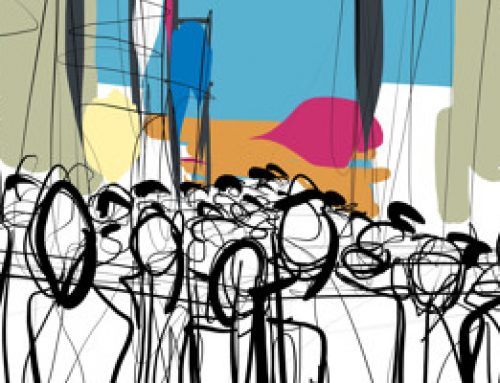The presence and creative expressions of the arts, culture and heritage provide vibrancy for the community and an atmosphere of vitality, diversity and inclusion.
National Context
The Canadian Index of Wellbeing 2016 national report shows that the arts and culture sector is showing strong signs of recovery from the 2008 recession. Canadians are increasingly participating in the arts and demonstrating interest in Canada’s National Parks and Historic Sites. However, levels of volunteering for culture activities and overall spending and participation in arts and culture have room for improvement.
Source: Canadian Index of Wellbeing National Report, 2016
Rating
Arts, Culture and Heritage
How Niagara is doing in the Arts, Culture and Heritage Sector in 2017:
2 – We’re doing well and headed in the right direction
Amount of progress currently being made in the Arts, Culture and Heritage Sector in 2017:
A – Considerable progress is being made
Happening Now!
- Since 2015, Niagara Region has invested over $587,000 in innovative, collaborative arts and culture projects through the Niagara Investment in Culture Program.
- The $60 million FirstOntario Performing Arts Centre (PAC), a four-venue facility that includes a 775-seat main theatre and event space, opened in St. Catharines in October, 2015. The PAC hosted over 1,100 ticketed events, sold over 150,000 tickets, and welcomed over 200,000 patrons in its first year. The Foster Festival is the PAC’s resident summer theatre festival, showcasing the work of internationally renowned Canadian playwright Norm Foster.
- Two new monuments mark the critically important contributions of Indigenous people to Canada during its formative years. Landscape of Nations: The Six Nations and Native Allies Commemorative Memorial was unveiled in 2016 at Queenston Heights park. This $1.4 million memorial project was a joint investment by the federal, Ontario, and local governments, the Six Nations Legacy Consortium, and many donors. In 2017, the Monument of Peace at Decew House Heritage Park in Thorold was unveiled. It helps us to remember the role First Nations warriors played in escorting Laura Secord to the British garrison stationed at Decew House.
- Grimsby, Niagara-on-the-Lake and St. Catharines participated in the Doors Open Ontario program in 2017. For St. Catharines, it was a new one-day event that attracted 5,636 residents and visitors to explore a total of 24 sites including buildings, places, businesses and institutions.
- During the 2017 pan-Canadian Culture Days event, a total of 61 Activities were offered across Niagara.
What’s Emerging
- In celebration of the 150th anniversary of Confederation, the Niagara Community Foundation offered a total of $120,000 in Canada 150 grants for local projects that build community, inspire a deeper understanding of Canada, and encourage participation in a wide range of initiatives. These funds were offered as part of a collaboration between Community Foundations of Canada and the Government of Canada.
- A 2017 national Vital Signs Arts and Belonging report shows that youth with arts-rich experiences participate and are more engaged; and quality arts programming for people over age 65 reduces social isolation, helps maintain community ties and improves physical and mental health.
- Niagara Falls History Museum is working in partnership with the Niagara Regional Native Centre to present Reclaiming Cultural Identity workshops and talks on Wampum Belts, Indigenous Beadwork in Niagara and Creation Stories for Indigenous and non-Indigenous participants. Education is seen as the key to facing the truths of history and forging a path together.
- Arts groups are collaborating with the community. The Foster Festival Drama Club for Kids is partnering with Boys and Girls Club of Niagara, the Niagara Children’s Centre, and the Kristen French Child Advocacy Centre. Branch Out Theatre created plays for HEART, a project led by McMaster DeGroote School of Medicine Niagara Campus students, to focus on homelessness and access to health care in Niagara.
- The Welland Canal Fallen Workers Memorial was unveiled in November, 2017 at Lock 3, to memorialize the 137 men whose deaths were documented during the 18-year construction of the fourth canal (1913 to 1935). The $1.2 million memorial was made possible with funding from the Department of Canadian Heritage, Niagara Region, the City of St. Catharines and significant donations from the marine industry, local businesses and the labour community.
Suggested Action Steps
- Invest in developing and beginning to talk together about metrics and evaluation that track progress and impact of the Arts, Culture and Heritage Sector in Niagara. This will support evidence-informed decision-making and enable comparisons over time.
- Strengthen existing partnerships and identify opportunities to build new ones within Arts, Culture and Heritage networks in Niagara, by engaging Sector players in working together to build a connectivity map.
- Acknowledge and provide evidence about how investment in Arts, Culture and Heritage is an essential element in building up Niagara’s social health and economy.
- Create an action plan to address barriers that exist to people being able to access Arts, Culture and Heritage activities and programming in Niagara.
- Encourage local leadership to invest directly into an independent entity that builds the overall capacity of the Arts, Culture and Heritage Sector in Niagara.
Indicators
Involvement in and Time Spent on Arts, Culture and Heritage Activities in Niagara
- Library Use
- Arts, Culture and Heritage Activities and Groups in Niagara
Mapping of Arts, Culture and Heritage Assets in Niagara
Contribution of the Cultural Sector to the Economy
- Contribution of Cultural Tourism to the Economy
- Consideration of Arts, Culture and Heritage in Economic Strategies and Local Development Plans








